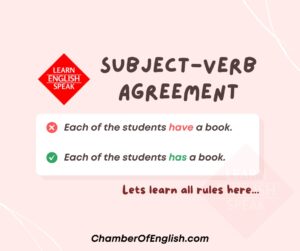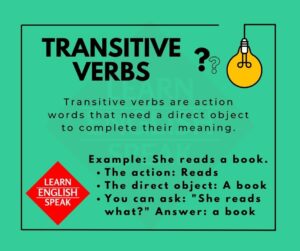In English, verbs are categorized into different types based on their functions and roles within sentences. Here are the main types of verbs:
- Action Verbs: These verbs express actions performed by the subject. They can be further divided into Transitive and Intransitive action verbs.
- Transitive Verbs: These verbs require a direct object to complete their meaning. Example: She reads a book. (The verb “reads” requires the direct object “a book.”)
- Intransitive Verbs: These verbs don’t need a direct object to make sense. Example: He laughs. (The verb “laughs” doesn’t need a direct object.)
- Linking Verbs: These verbs connect the subject of a sentence to a subject complement, which can be an adjective or a noun.Example: She is tired. (The linking verb “is” connects the subject “She” to the subject complement “tired.”)
- Helping Verbs (Auxiliary Verbs): These verbs are used in conjunction with the main verb to create verb tenses, questions, and negatives.Example: I am studying. (The helping verb “am” is used with the main verb “studying.”)
- Modal Verbs: Modal verbs indicate possibility, necessity, permission, or ability. They are always followed by a base form of the main verb.Example: She can swim. (The modal verb “can” is followed by the base form of the main verb “swim.”)
These types of verbs play different roles in constructing sentences and expressing various ideas. Understanding their distinctions can greatly enhance your ability to communicate effectively in English.
Stay tuned for more engaging lessons on grammar and follow us on our Facebook page: Learn English – Speak English




